Chad M. Eliason Senior Research Scientist, Field Museum of Natural History
Research
I am broadly interested in understanding why some groups of organisms are more phenotypically diverse than others. My approach to science involves identifying novel trait systems that are pervasive in nature but have eluded our attention and studying these systems with both theoretical and empirical approaches. My research spans the fields of evolutionary morphology, paleontology, and functional morphology, using the integument of birds as a model system. Specifically, my research focuses on the following areas:
Evolutionary Biophotonics
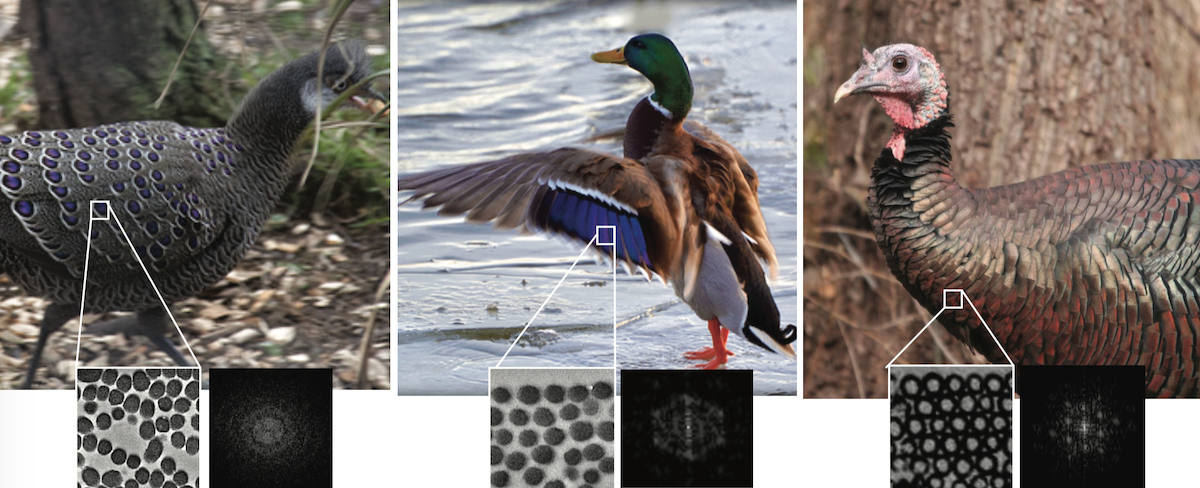 Diversity of structural colors and biophotonic nanostructures in birds
Diversity of structural colors and biophotonic nanostructures in birds
Animals communicate in diverse ways–using chemicals, sounds, colors, and touch. Structural colors are among the brightest and most diverse phenotypes in nature. Unlike pigment-based colors, structural colors are produced by scattering of light by feather tissues. My collaborators and I use mathematical models to study the optical processes in biological systems (biophotonics). As an example, here is a single simulation based on a stack of melanin rods (circles) based on the anatomy of the iridescent duck feather shown above:

With this model in hand, we can then simulate theoretical colors and use comparative methods to understand how innovations in color production relate to macroevolutionary patterns. As an example of this approach, we studied color production and evolution in ducks. This work revealed how melanin structures within feathers lead to rapid evolution of coloration (Eliason et al. 2015).
Relevant publications:
- Eliason CM, Maia R, Parra JL, Shawkey MD. 2020. Signal evolution and morphological complexity in hummingbirds (Aves: Trochilidae). Evolution. [pdf]
- Eliason CM, Maia R, Shawkey MD. 2015. Modular color evolution in ducks facilitated by a complex nanostructure. Evolution 69:357-367. [pdf] [doi]
- Eliason CM, Bitton, P-P, Shawkey MD. 2013. How hollow melanosomes affect iridescent colour production in birds. Proceedings of the Royal Society: B 280:20131505. [pdf] [doi]
Feather Evolution
 Photo credit: Tyrone Lavery
Photo credit: Tyrone Lavery
Birds are the last living relatives of extinct dinosaurs. A striking feature of modern birds is their feathers. Recent work shows that many extinct dinosaurs had feathers similar to those found in modern birds. Why did feathers evolve? As the interface between a bird and its environment, feathers have evolved to serve multiple functions in the daily lives of birds. One avenue of my research looks at how optimization of one function might affect other functions, such as color. For example, we found that feather microstructure influences both the color and the water repellency of feathers. This might tell us about the cost of bright color patches, but to tackle questions such as When did feathers evolve? or How do overall plumage patterns evolve? we study color patterns and feather anatomy in fossil taxa and using novel tools for studying complex trait evolution (Eliason et al. 2019).
Relevant publications:
- Eliason CM, Clarke JA. 2020. Cassowary gloss and a novel form of structural color in birds. Science Advances 6(20): eeba0187.
- Dongyu H, Clarke JA, Eliason CM, Qiu R, Li Q, Shawkey MD, Zhao C, D’Alba L, Jiang J, Xu X. 2018. A bony-crested Jurassic dinosaur with iridescent plumage highlights complexity in early paravian evolution. Nature Communications 9.
- Eliason CM, Hudson L, Watts T, Garza H*, Clarke JA. 2017. Exceptional preservation and the fossil record of tetrapod integument. Proceedings of the Royal Society B 284:20170556. [pdf] [doi]
Comparative Biomechanics of Plunge-Diving Birds
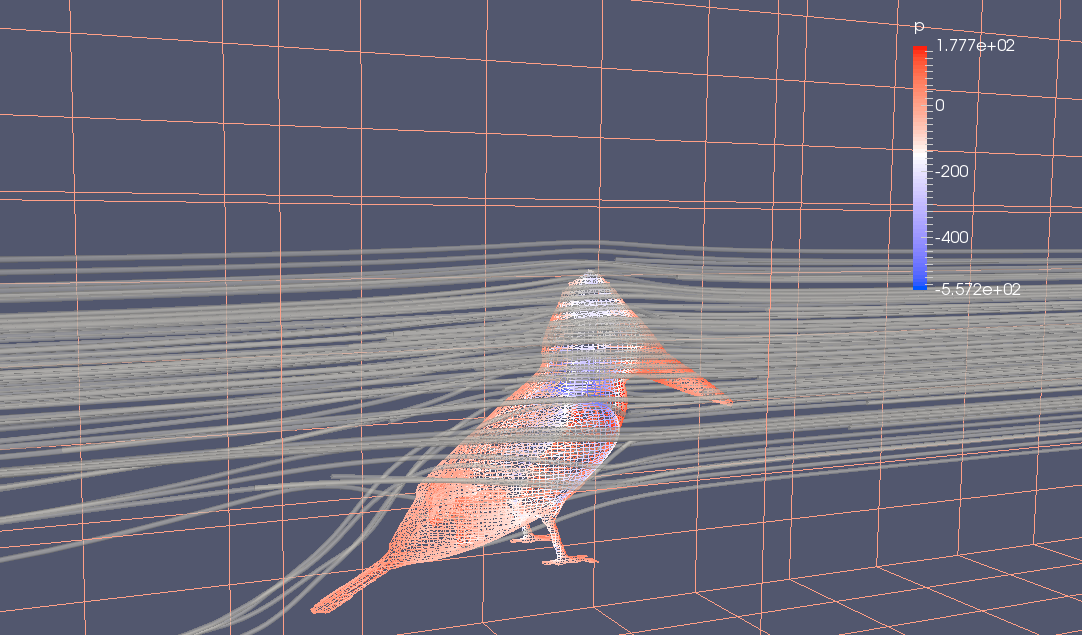 Computational fluid dynamics simulation of water movement over a bird’s body
Computational fluid dynamics simulation of water movement over a bird’s body
Foraging innovations can drive morphological diversity by opening up new ways of interacting with the environment, or limit diversity through functional constraints associated with different foraging behaviors. Several classic examples of adaptive radiations in birds show increased variation in ecologically relevant traits. These examples often focus on geographically narrow adaptive radiations (Darwin’s finches) or consider only morphological evolution without a biomechanical approach. Considering how morphology relates to function is crucial for understanding morphological diversification. Kingfishers comprise a global radiation of birds with diverse ecologies and foraging behaviors, including the archetypal plunge-dive into water. Diving into water can be a strong, yet underappreciated, selective agent on body streamlining. My work uses CT scanning, computational fluid dynamics, and multivariate comparative methods to understand the relationships among behavioral, morphological, and functional diversity in the global radiation of kingfishers.
Relevant publications:
- Eliason CM, Straker L, Jung S, Hackett SJ. Morphological innovation and biomechanical diversity in plunge-diving birds. In press at Evolution.
- Eliason CM, McCullough J, Andersen MJ, Hackett SJ. 2021. Accelerated brain shape evolution is associated with rapid diversification in an avian radiation. The American Naturalist 197(5).
Phenotypic Evolution During Rapid Avian Radiations
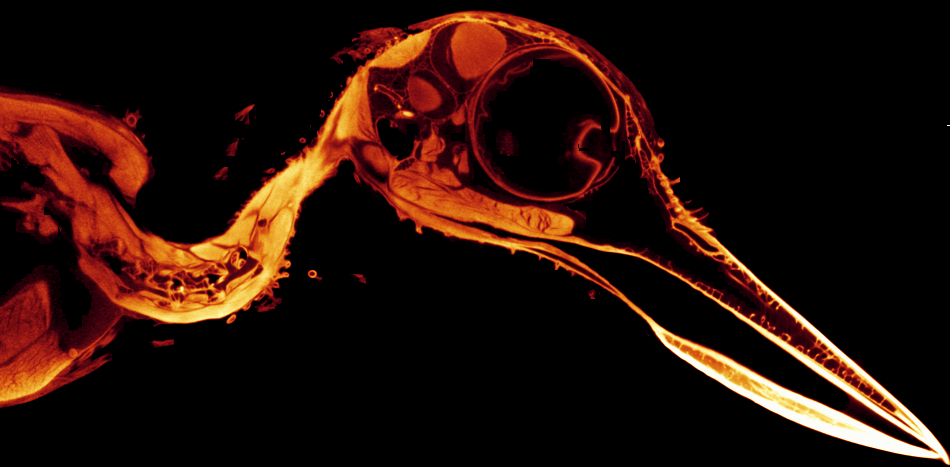
Repeated evolutionary radiations are a hallmark of birds. Adaptive radiations are predicted to be accompanied by accelerated trait evolution. Most previous work on adaptive radiations in birds has been focused on external morphology, such as beaks. Studying internal morphology may be critical in understanding processes underlying evolutionary radiation. Recent technological advances have enabled the fast and cheap sequencing of genomes for whole clades of birds. We are interested in the analog: developing tools for rapidly assembling phenotypic datasets. Traditional image segmentation involves several hours of work, but our novel semi-automated approach of extracting semi-landmarks produces a rich dataset across a speciose clade of birds in minutes. The resulting dataset can be used to study neuroanatomical changes during rapid radiations. As an example, here is a visual representation of the “major axis” of brain shape variation in kingfishers, informed by 3-D landmark data placed on the surface of the braincase:
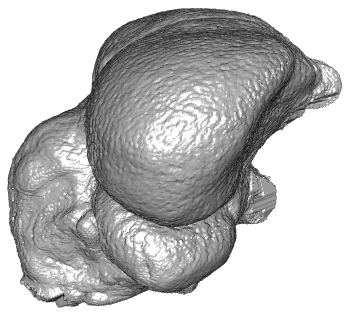
Relevant publications and presentations:
- Eliason CM, McCullough J, Andersen MJ, Hackett SJ. 2021. Accelerated brain shape evolution is associated with rapid diversification in an avian radiation. The American Naturalist 197(5).
- Eliason CM, Clarke JA. Pipelines and methods for visualization and analysis of phenomic data. Society for the Study of Evolution annual conference. Austin, TX. June 17 - 21, 2016. [poster] (manuscript currently in revisions)
Comparative Genomics of Sensory Systems
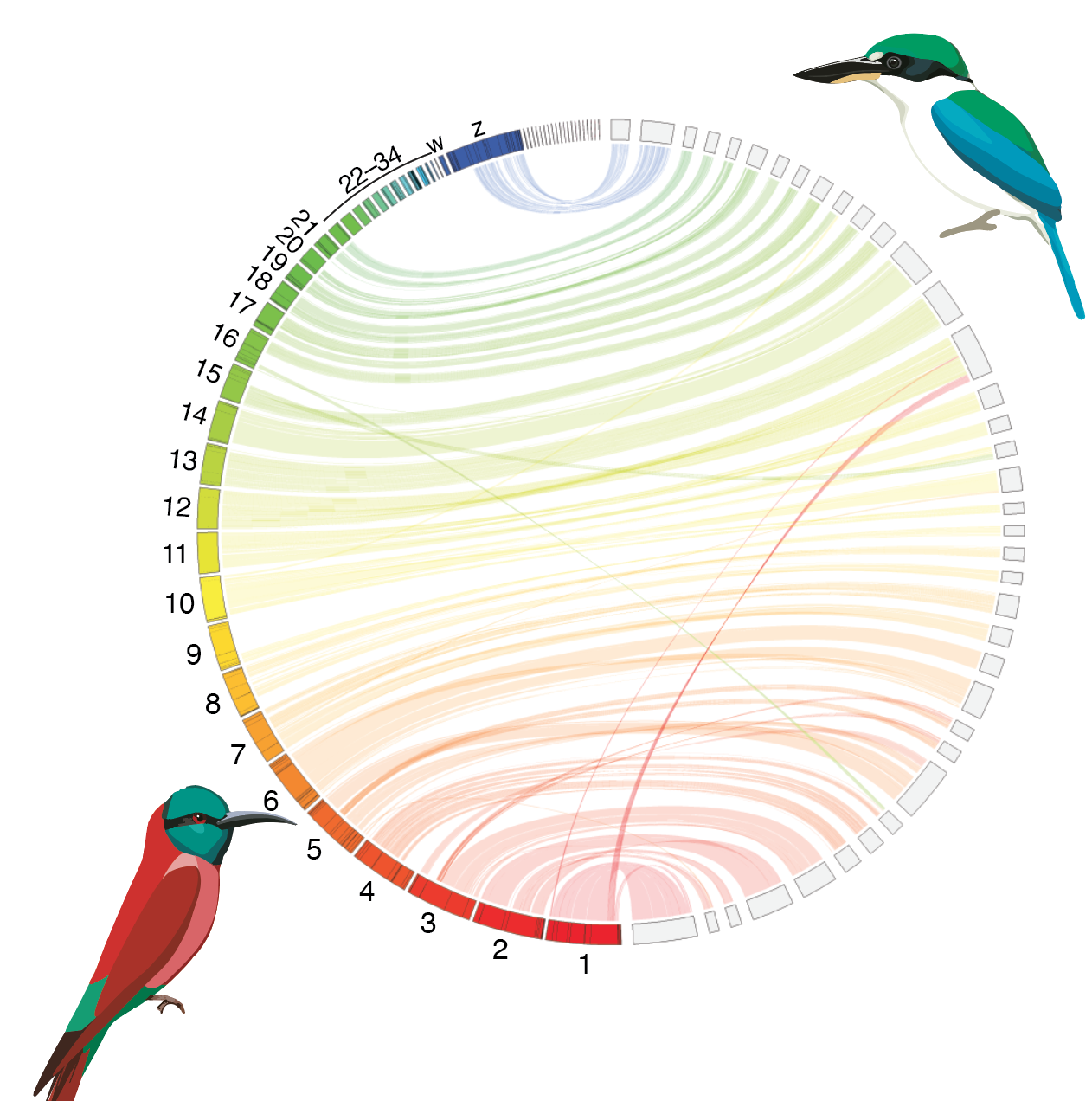
We recently sequenced a high-quality reference genome of a collared kingfisher. We are now interested in identifying the genomic basis of variable phenotypes across many species in the family and quantifying the evolutionary patterns across the kingfisher radiation. Powerful new approaches for combining genomes and phenomes will be used to shed light on the evolutionary processes underlying trait evolution.
Relevant publications:
- Eliason CM, McCullough JM, Hains T, Andersen MJ, Shackett SJ. Genome report: Genomic novelty within a ‘great speciator’ revealed by a high-quality reference genome of the collared kingfisher (Todiramphus chloris collaris). In press at G3: Genes, Genomes, Genetics.